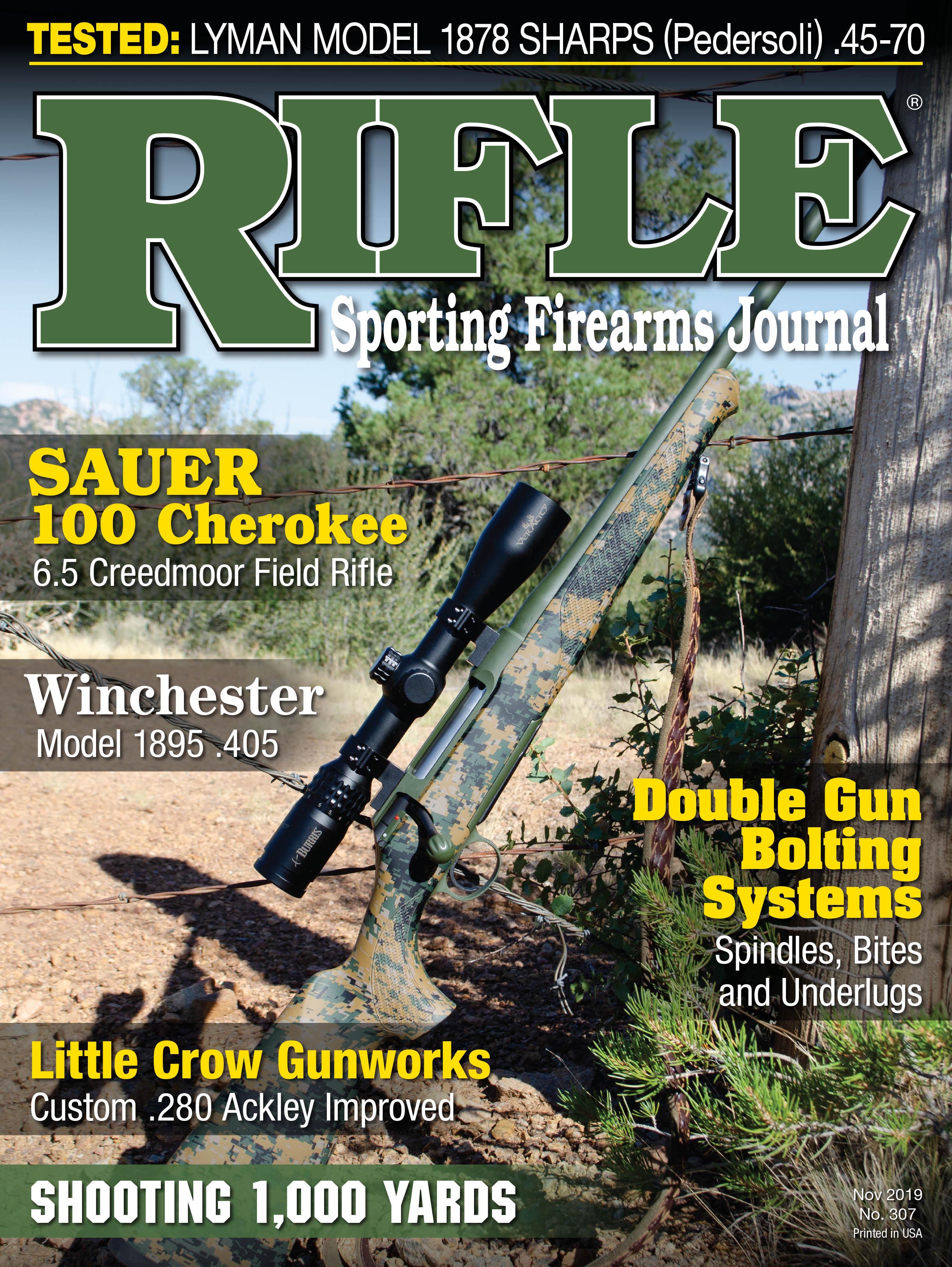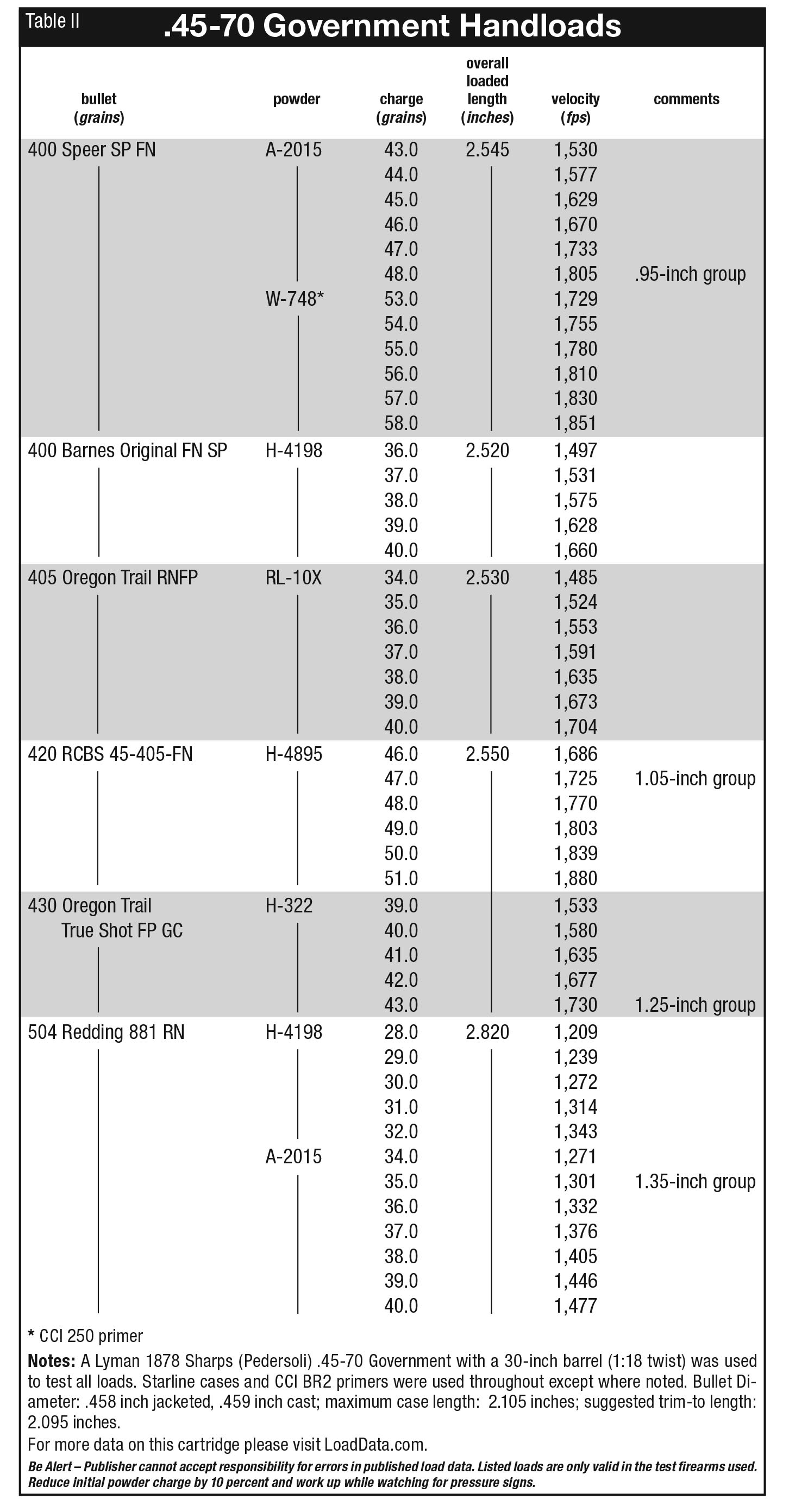Lyman Model 1878 Sharps
Made by Pedersoli, the .45-70 shoots.
feature By: Brian Pearce | November, 19

Today, on those occasions when desirable rifles are offered for sale, they command especially high premiums. As a result, several companies have responded with top-drawer reproductions, including Shilo Sharps and C. Sharps Arms, each appropriately manufactured in Montana.

While there are (or have been) several foreign companies that offer replicas with varying degrees of quality, Italian manufacturer Pedersoli produces a quality rifle at an attractive price and is generally considered the best of the imports. Recently, Lyman has teamed with Pedersoli to produce the Model 1878, but it is more or less similar to the very rare Sharps Model 1877 side hammer. My sample rifle is handsome, well made and accurate. With excellent sights and a comparatively lightweight configuration compared to most “buffalo rifles,” it will appeal to target shooters and hunters alike.

The exact number of Long-Range Model 1877s produced is unknown; however, it was probably less than 100. Sadly, the famous manufacturer was struggling and began taking steps to close its doors, with the last of the Model 1877s being made into “sporting rifles” and sold to J.P. Lower in Denver, Colorado, in 1880.


Upon examining the sample rifle, I was impressed. I have worked with several Pedersoli Sharps-pattern rifles in years past. They have proven to be accurate, well-made rifles, but the Lyman 1878 displays better fit and finish than previous guns. The machining is good, the barrel is straight and the bore is beautifully finished with a mirror-like surface. It is only offered in .45-70 Government, a cartridge capable of winning matches and is well suited to taking heavy, dangerous game.

The 1878 comes with Lyman’s excellent No. 2 tang sight that features interchangeable apertures to help the shooter tune the sight picture for a variety of field or range applications. The front sight is a machined No. 17A globe that comes with seven different sight disks (inserts) to allow a quick change of the sight picture. Also included is a bright yellow plastic insert that serves to brighten the sight picture if desired. With so many sighting combinations, the rifle is at home on a target range or in the field. However, the No. 2 sight is not designed for long-range work; rather it is intended to be used at typical hunting distances that are normally kept within 200 yards or so.
One of the features I very much like about the 1878 is its weight and balance. For instance, total weight is just 9 pounds, whereas many Sharps reproduction and original “buffalo rifles” typically weigh between 12 to 16 pounds. These heavyweight rifles are great for shooting either long-range targets or buffalo, though neither of those activities require much hiking or carrying the rifle for miles.
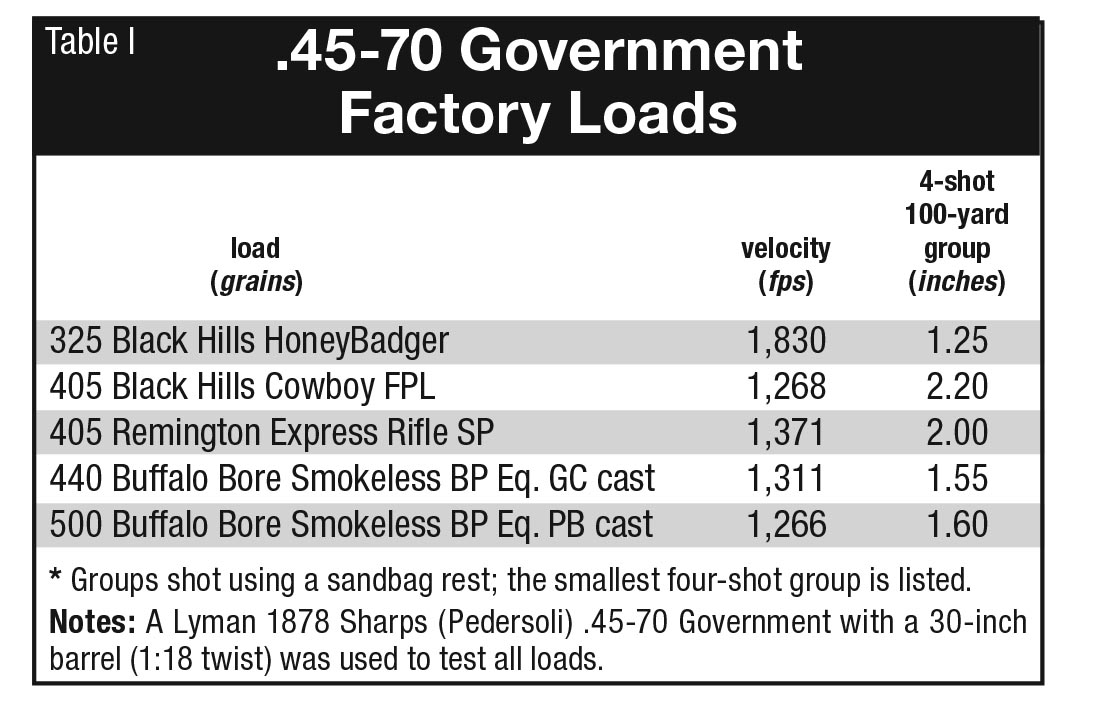
The 1878 carries and balances beautifully and is a rifle that I would gladly take into the mountains hunting. Its balance point is just forward of the receiver on the rearmost part of the forearm, which is rounded and comfortable when cradled in the palm of the hand. While there are no provisions for attaching a sling, there are mounting options that will not detract from the classic lines of this rifle. It also comes to the shoulder comparatively “lively” or “quickly” (as an upland shotgunner would say), making it capable of serving as a brush and timber rifle.
The barrel has an outside muzzle diameter of .820 inch that results in enough muzzle weight to balance properly for offhand shooting while being heavy enough to help control recoil, but neither is it muzzle-heavy. The shotgun style stock serves to reduce felt recoil and seems to fit most shooters very comfortably.

It is important to note the correct method of loading and unloading the Sharps-pattern, side-hammer rifles for safety and to prevent breaking or damaging the firing pin. Before opening the action – accomplished by pushing the trigger guard (aka lever) downward – the hammer must first be placed in the half-cock position. When the hammer is in the fully down position, the firing pin is pushed forward and there is a chance of damage or breakage if the action is opened. Likewise, after each round is fired the hammer should again be placed in the half-cock position before extracting a fired case and inserting a new cartridge. This method also prevents the firing pin from contacting the cartridge’s primer as the action is closed on a loaded round. If the action is closed with the hammer in the down position, the extended firing pin will contact the primer and can potentially result in a discharge.


My only criticism of this Pedersoli is rather minor and includes the hammer position when placed in the half-cock mode. The hammers of original Sharps rifles (as well as reproductions from Shiloh Sharps and C. Sharps Arms) are engaged in the half-cock (or safety) position almost immediately after the hammer is lifted off of the firing pin block. By contrast, the hammer of the 1878 rifle is actually approaching the full-cock position when the half-cock notch is engaged. With some minor reengineering, it could be changed to function more like the originals, which would also result in a safer design.
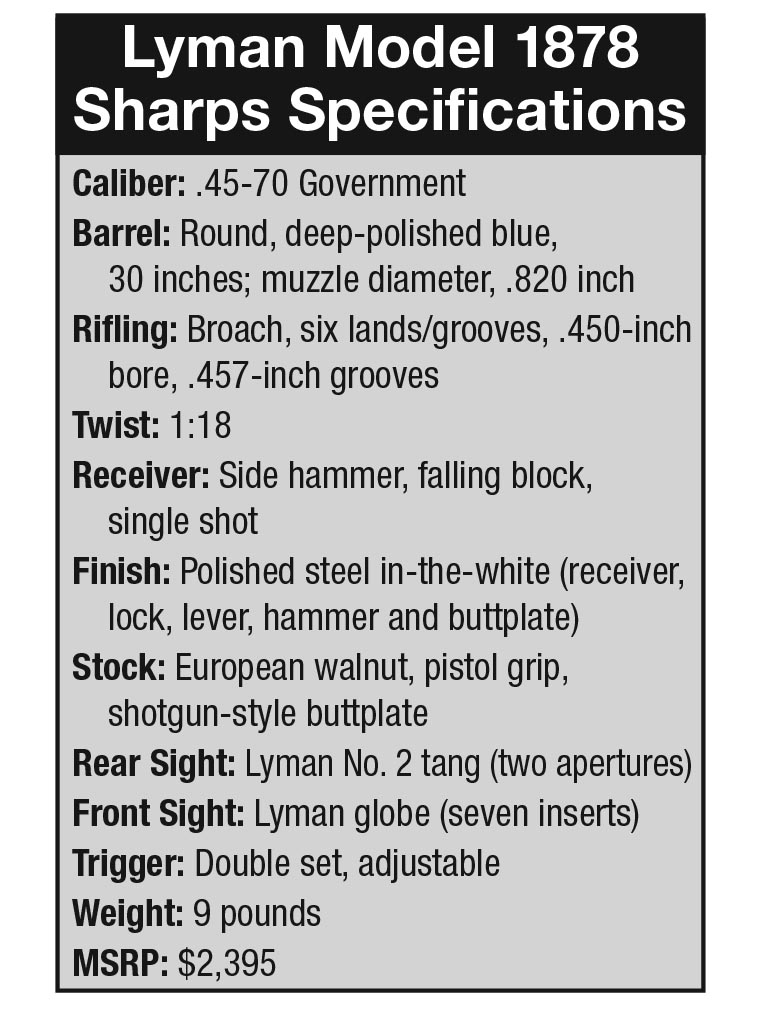

For clarification, current .45-70 factory loads as produced by Black Hills Ammunition, Federal Cartridge, Remington and Winchester (all members of SAAMI) are generally loaded to around 18,000 to not over 22,000 CUP, which translates into a similar figure when converted to psi. Pressures of factory loads are intentionally kept below SAAMI guidelines in deference to the comparatively weak actions associated with black-powder era Springfield Model 1873 “Trapdoor” rifles. When the .45-70 is handloaded to 28,000 psi, combined with the velocities produced by the 30-inch barrel of the Lyman 1878 rifle, performance can be notably enhanced when compared to factory loads fired in shorter barrels, such as popular leverguns that often have barrels of 18.5 to 22 inches.
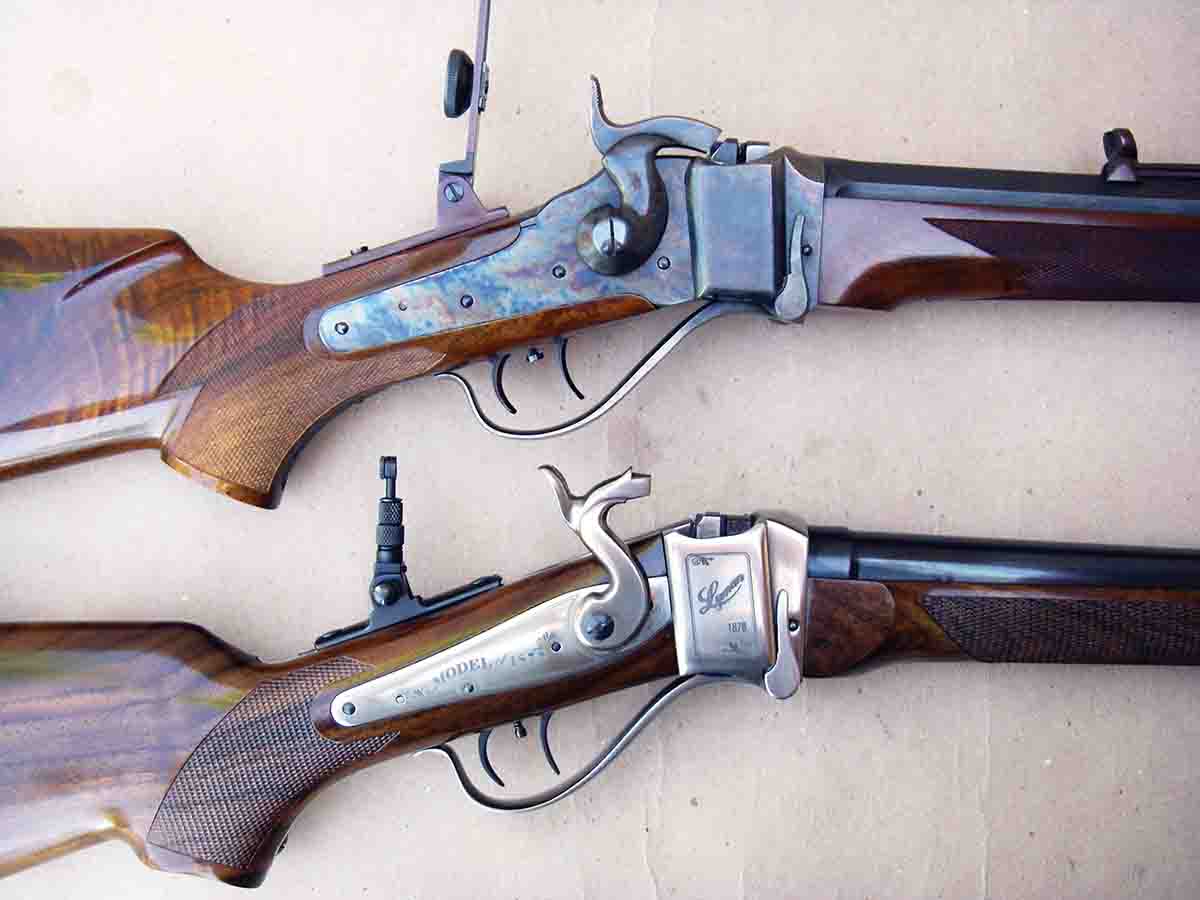
To help break in the bore, it was first cleaned, very lightly oiled then fired with a jacketed bullet, cleaned again and repeated for the first five shots. There was so little fouling between shots that this step was probably not necessary. According to Pedersoli, its barrels have won many “gold medals [and] set world records during international competitions.” This Lyman 1878 barrel is what they refer to as “best presentation” and is “qualified Premium Match Grade.” It is constructed of the finest material and is drilled, reamed and lapped to a mirror-like finish and broach rifled. Special care is taken to eliminate small disparities found in the “bottom of the rifling.” Incidentally, the barrels are slightly choked, which according to Pedersoli serves to “better stabilize the bullet.” In shooting a fair number of handloads through this rifle, it sure seems to have a “fast barrel” that produces higher velocities when compared to other barrels of the same length.
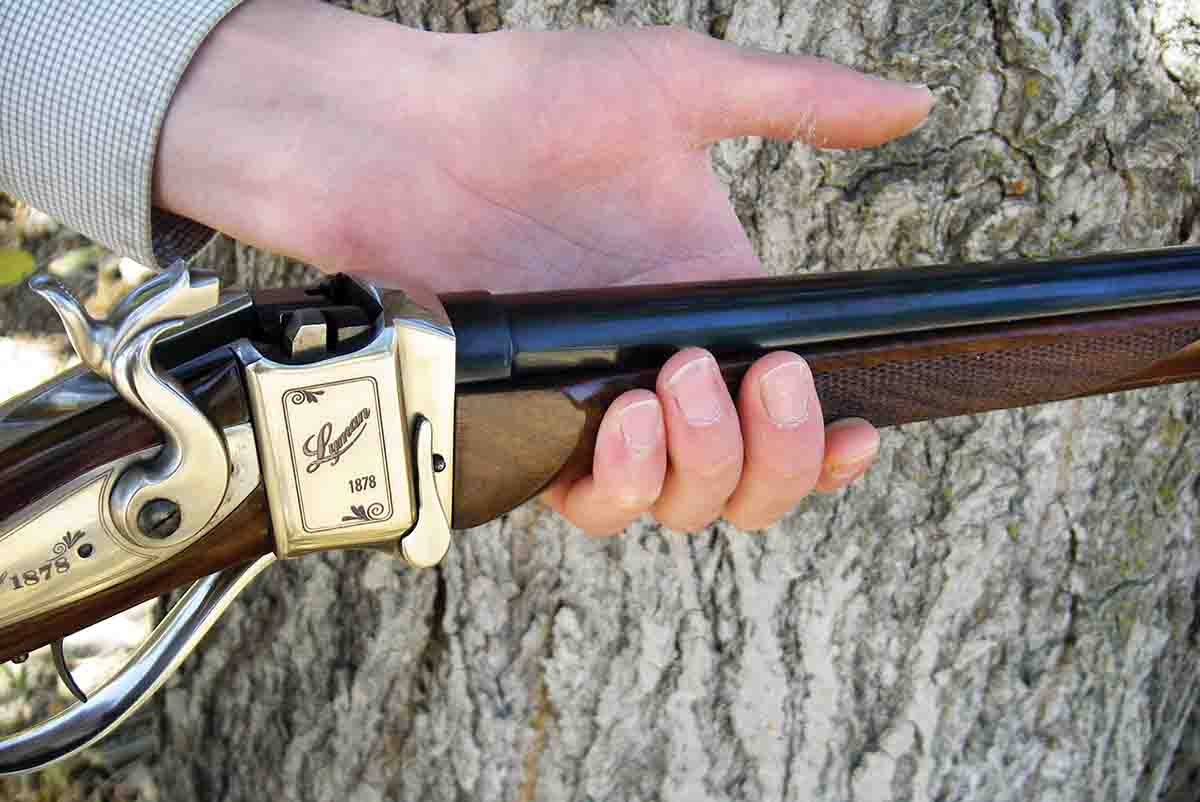
Moving on to handloads, the primary focus was to develop practical loads for hunting and included both jacketed and cast bullets with weights that ranged from 400 to 504 grains. None of the accompanying loads exceed the previously mentioned 28,000 psi limits, and in fact most are well below this pressure guideline.
With carefully assembled handloads the Lyman Model 1878 produced outstanding accuracy with both cast and jacketed bullets. First up was the classic Speer 400-grain SP FN bullet that is so popular in leverguns. Using 48.0 grains of Accurate 2015 powder, velocity was 1,805 fps using CCI BR2 primer, and extreme velocity spreads were single digit while four shots grouped under one inch. Other notable loads included the RCBS 420-grain cast bullet from mould 45-405-FN pushed to 1,725 fps using 47.0 grains of H-4895 powder that produced virtually identical accuracy to the above Speer bullet. The Oregon Trail 430-grain True Shot FP GC pushed to 1,730 fps using 43.0 grains of H-322 powder likewise produced select groups that measured between 1.25 to 1.60 inches. If seeking traditional 500-grain RN cast bullet data, bullets from Redding mould 881 were used (cast at 504 grains with a Brinell hardness number of 9 and lubed with SPG). Hodgdon H-4198 and Accurate 2015 powders were selected, with both producing similar accuracy as the above mentioned handloads. In spite of this bullet being a plain-base design, there was virtually no barrel leading.
The Lyman rifle functioned and performed flawlessly throughout many shooting sessions. It is accurate, offers a beautiful balance and is light enough to carry in the field, making it an excellent choice for hunters.


